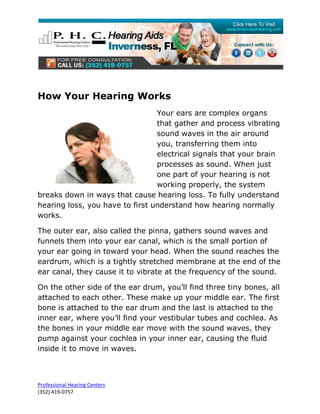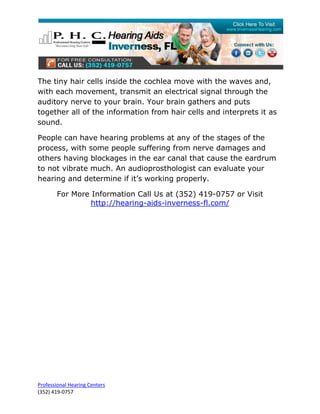How your hearing works
- 1. How Your Hearing Works Your ears are complex organs that gather and process vibrating sound waves in the air around you, transferring them into electrical signals that your brain processes as sound. When just one part of your hearing is not working properly, the system breaks down in ways that cause hearing loss. To fully understand hearing loss, you have to first understand how hearing normally works. The outer ear, also called the pinna, gathers sound waves and funnels them into your ear canal, which is the small portion of your ear going in toward your head. When the sound reaches the eardrum, which is a tightly stretched membrane at the end of the ear canal, they cause it to vibrate at the frequency of the sound. On the other side of the ear drum, you’ll find three tiny bones, all attached to each other. These make up your middle ear. The first bone is attached to the ear drum and the last is attached to the inner ear, where you’ll find your vestibular tubes and cochlea. As the bones in your middle ear move with the sound waves, they pump against your cochlea in your inner ear, causing the fluid inside it to move in waves. Professional Hearing Centers (352) 419-0757
- 2. The tiny hair cells inside the cochlea move with the waves and, with each movement, transmit an electrical signal through the auditory nerve to your brain. Your brain gathers and puts together all of the information from hair cells and interprets it as sound. People can have hearing problems at any of the stages of the process, with some people suffering from nerve damages and others having blockages in the ear canal that cause the eardrum to not vibrate much. An audioprosthologist can evaluate your hearing and determine if it’s working properly. For More Information Call Us at (352) 419-0757 or Visit http://hearing-aids-inverness-fl.com/ Professional Hearing Centers (352) 419-0757


